Identify and Attract the Common Buckeye Butterfly
Updated: Jul. 26, 2023
Despite the name, the common buckeye is anything but ordinary. The eyespots make this brown butterfly a real attention-getter!
What Does a Common Buckeye Butterfly Look Like?
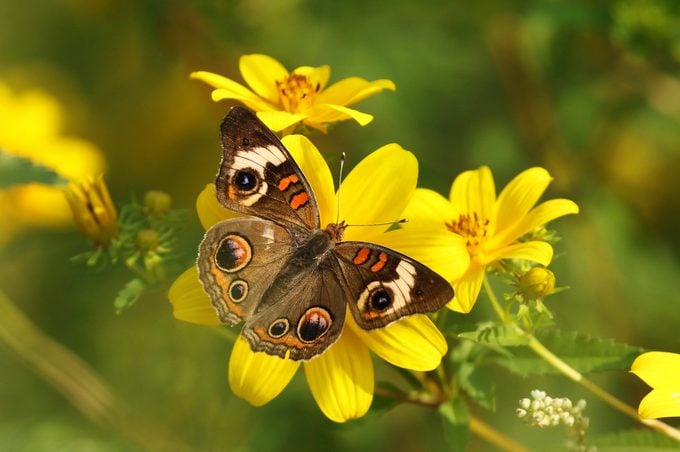
A surprising number of species include the word “common” in their name, although the species itself is anything but ordinary. One good example is the common buckeye butterfly (Junonia coenia). The “common” in its name helps distinguish it from the similar-looking tropical buckeye (Junonia everete) and mangrove buckeye (Junonia genoveva).
At first glance, this medium-sized butterfly may seem brown and commonplace. A second look will bring the yellow-rimmed black eyespots with blue centers to your attention, as well as the orange bars on its forewings.
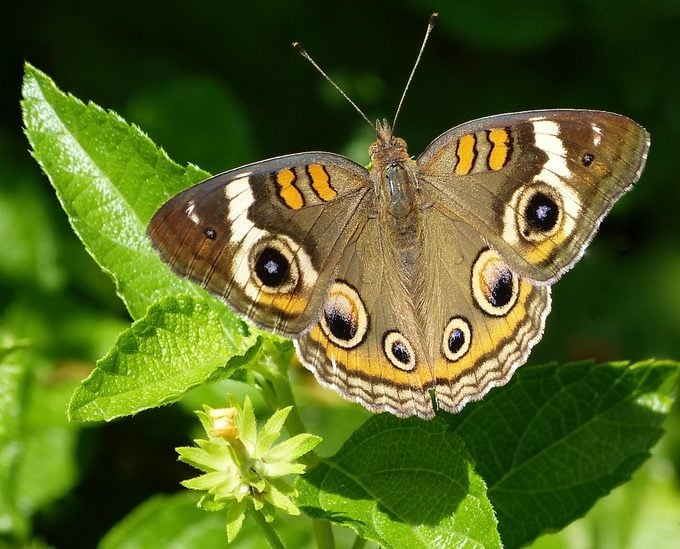
“My attraction to the common buckeye started with the patterned eyes, the colors and the symmetry on its upper wings. I worked hard for years to snap this photo that shows the three features I love. I’ve found buckeyes to be skittish and quick to fly away, but this one stayed put when I approached it,” says Birds & Blooms reader Joe Bob Hall of Holly Lake Ranch, Texas.
Learn how to attract butterflies in 9 easy ways.
Common Buckeye Wings
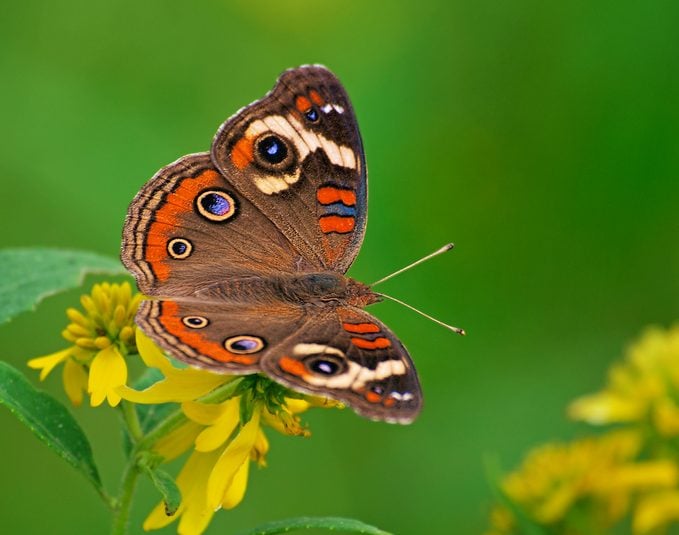
A typical common buckeye wingspan is 1 1/2 to 2 1/2 inches.
“The wings of a common buckeye remind me of a painter’s palette. Buckeyes feed on wildflowers along old country roads near my home. I love to photograph the beauty around me, especially the things most people miss,” says reader Willie Powell.
Did you know: It’s normal and OK to see butterflies with tattered wings. Common buckeyes get around just fine even with as much as two-thirds of their wings missing.
Psst—you HAVE to see these beautiful butterfly pictures.
Common Buckeye Facts
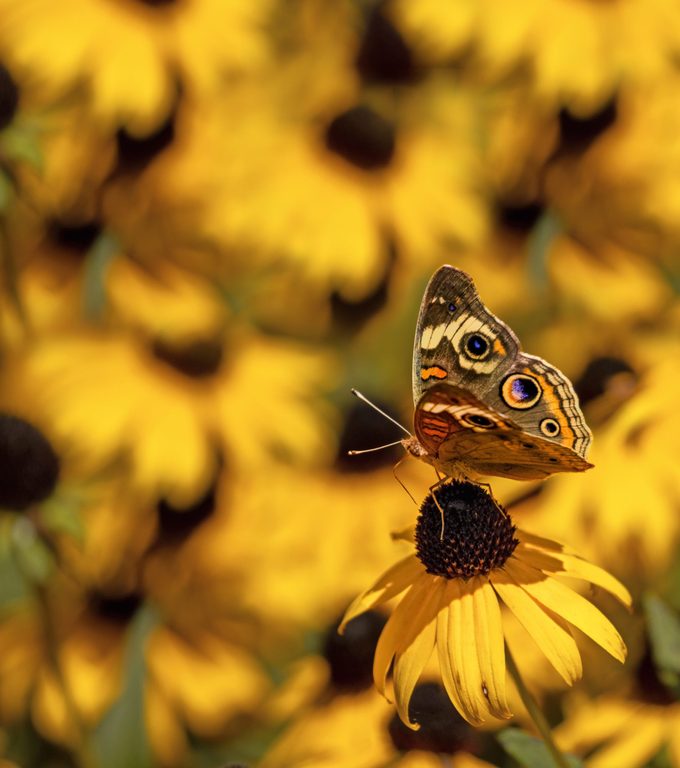
- Wingspan 1 1/2 to 2 1/2 inches
- Distinctive Markings Brown with orange bars on forewings; large yellow-rimmed black eyespots with blue centers
- Habitat Open sunny spaces, including fields, gardens, roadsides; often sits on bare ground
- Caterpillar Dark green to gray, with orange and yellow markings and black spines
- Host Plants Snapdragon, plantain, figwort, vervain, ruellia and others
- Range Most common in the South, but familiar across much of the U.S.
- Eggs Small and green
“I call this photo (above) ‘Buckeye Susan.’ The common buckeye is one of my favorite visitors. It might not be as flashy as a swallowtail, but the earthy tones make it my favorite. The colors of the black-eyed Susans and this butterfly mesh so well in this photo,” says reader Karen Louis of Shiloh, Illinois.
Discover fascinating monarch butterfly facts.
Common Buckeye Butterfly Habitat
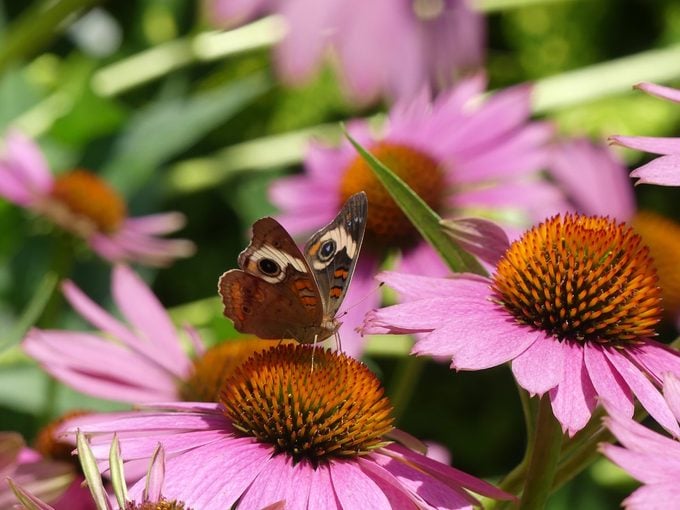
Common buckeyes are found across nearly all of the U.S. and southern Canada at certain times of year. In southern regions, they may be more common during cooler seasons when their host plants are more readily available.
In Tampa, Florida, I usually see common buckeyes up through late June or early July, after which the population moves north to find a better crop of host plants for their caterpillars. (Folks in Florida may also see mangrove buckeyes, while those in the Southwest may see tropical buckeyes.)
While these butterflies don’t migrate en masse like monarchs, they do shift their population center. Most of these butterflies will begin to move south for the winter, but they won’t fly in large groups like monarchs. Their population will slowly start to focus itself further south a bit at a time. You can help them thrive in the late summer and fall months by keeping plenty of nectar flowers in your garden.
Give butterflies a boost with 5 essential fall butterfly garden tips.
Caterpillar and Host Plants
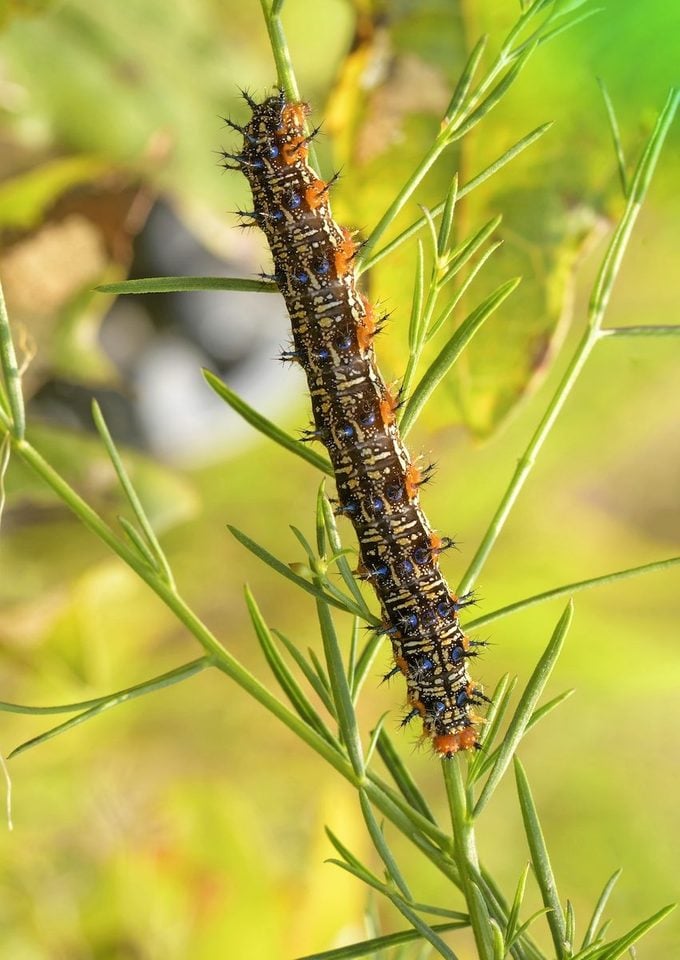
Dark green to gray, with orange and yellow markings and black spines, common buckeye caterpillars molt five times before the chrysalis stage. The spines are harmless to humans but deter predators such as birds and lizards.
This butterfly lays its eggs on plants in the plantago, acanthus, and antirrhinim families. They especially enjoy toadflax, broadleaf plantain, figwort, vervain, ruella and snapdragons. Eggs are small and green, laid singly but often with many close together.
Next, learn how to identify a red spotted purple butterfly.




















